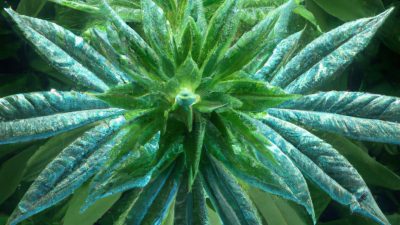
Estimating ROI for Cannabis labs: A Beginner’s Guide
The cannabis industry is booming, evolving rapidly with advancements in cannabis science, technology, and post-processing equipment. Among the essential components supporting this growth are cannabis testing labs, which ensure the quality, safety, and potency of cannabis products. however, starting or investing in a cannabis lab requires careful financial analysis, with estimating Return on Investment (ROI) being a critical step for beginners.
In this comprehensive guide, we’ll explore how to estimate ROI for cannabis labs effectively, tying it into the broader context of cannabis technology and processing innovations. Weather you’re a cannabis entrepreneur, investor, or enthusiast, understanding these concepts will help you make informed decisions in this dynamic industry.
Why ROI Matters in Cannabis Labs
ROI is a metric that shows the profitability of an investment relative to its cost. For cannabis labs, estimating ROI helps:
- Plan capital expenditures and operational budgets
- Assess the viability and scalability of cannabis testing services
- Understand how cannabis science innovations impact costs and revenues
- Attract investors by demonstrating potential profitability
With increasing regulatory requirements for product testing, cannabis labs play a pivotal role in the supply chain, making ROI estimation crucial for future-proofing investments.
key Components in Estimating ROI for Cannabis Labs
Estimating ROI for a cannabis lab involves balancing upfront and ongoing costs against expected revenues and profit margins.Here are crucial components to consider:
1. Initial Capital Investment
- Equipment: Sophisticated cannabis testing devices like High-performance Liquid Chromatography (HPLC),Gas Chromatography (GC),and Mass Spectrometry machines are essential.
- Facility Setup: Costs include lab space, renovation, and compliance with regulatory standards such as ISO 17025 certification.
- Software & Technology: laboratory Data Management Systems (LIMS) streamline data management, improving accuracy and compliance.
2. Operational Expenses
- Staff Salaries: Skilled lab technicians, analysts, and quality managers are critical for precise cannabis testing.
- Consumables: Chemicals, reagents, and standard cannabis samples for calibration and testing.
- Maintenance & Calibration: Regular servicing of sensitive cannabis lab equipment to maintain accuracy.
- Utilities & Overheads: Electricity, water, waste management, and insurance.
3. Revenue Streams
- testing Services: Potency, contamination, pesticide, terpene profiling, residual solvents, and microbial testing.
- Consulting Services: Advising cultivators and producers on product compliance and quality improvements.
- Data Reporting & Certification: Providing official certificates of analysis (CoA), which are mandatory for product distribution in legal markets.
Step-by-Step Guide to Calculate ROI for Cannabis Labs
Let’s break down the ROI estimation process with an easy-to-follow formula and example.
ROI Formula
ROI = (Net Profit / Total Investment) × 100
Where:
- Net Profit = Total Revenue – Total Expenses
- Total Investment = Initial Capital Investment + Total Operational Expenses
Example Calculation
| Category | Cost / Revenue (Annual) |
|---|---|
| Initial Capital Investment (Equipment + Setup) | $500,000 |
| Annual Operational Expenses (Staff, Consumables, Maintenance) | $300,000 |
| Annual Revenue from Testing and Services | $900,000 |
Net Profit = $900,000 – $300,000 = $600,000
Total Investment = $500,000 + $300,000 = $800,000
ROI = ($600,000 / $800,000) × 100 = 75%
This means the cannabis lab yields a 75% return on investment annually, indicating a profitable venture.
Benefits of Accurate ROI Estimation in Cannabis Labs
- informed Decision Making: Helps pinpoint profitable cannabis testing niches and technology upgrades.
- Risk Mitigation: Identifies potential cost overruns or declining revenues early.
- Benchmarking: Sets performance goals based on cannabis industry standards.
- Investor Confidence: Demonstrates transparency and financial potential to stakeholders.
Practical Tips to Optimize ROI in Cannabis labs
- Choose versatile cannabis lab equipment: Multi-analyte testing instruments improve service scope and efficiency.
- Implement automation and cannabis post-processing technologies: These reduce human error and speed up workflows.
- continuously train staff: Skilled personnel improve output quality and process optimization.
- Stay updated on cannabis regulations: Compliance avoids costly fines and interruptions.
- Diversify service offerings: Adding consulting or R&D services can create additional revenue streams.
Understanding How Cannabis Science Advances Affect ROI
Emerging innovations in cannabis science and technology-such as more precise analytical methods, rapid testing devices, and enhanced sample processing equipment-directly impact costs and revenues. labs that invest in cutting-edge technologies may incur higher upfront costs but achieve faster turnaround times, better accuracy, and can command premium pricing, ultimately improving ROI.
Conversely, labs failing to adopt new technologies risk losing competitive advantages, which might negatively affect their financial returns.
Conclusion
Estimating ROI for cannabis labs is a fundamental step for individuals and companies entering the cannabis testing market. It intertwines with the broader cannabis ecosystem-integrating cannabis science, technology advancements, and post-processing equipment to maximize business potential.
By carefully calculating investment costs, operational expenses, and anticipated revenues, beginners can make data-driven decisions, minimize risks, and unlock growth opportunities in this fast-evolving sector. For sustained success, labs should prioritize adopting innovative cannabis testing technologies and expanding service portfolios.
As the cannabis industry continues to expand globally, mastering ROI estimation is a key ingredient for ensuring your cannabis lab project thrives sustainably in this lucrative and rewarding marketplace.





